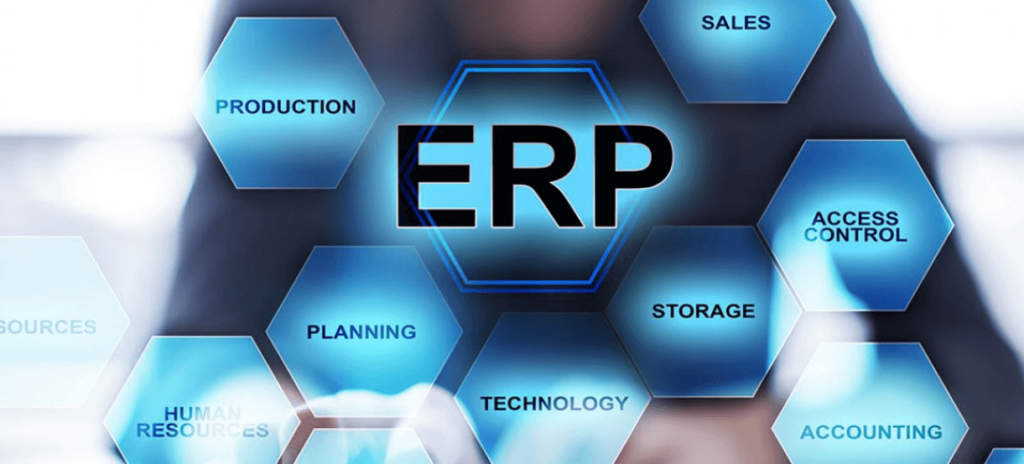ERP or Postmodern ERP?


Which approach is the best for your IT infrastructure?
The Evolution of business technology
The term Enterprise Resource Planning (ERP) was developed by Gartner in 1990 and defined as ‘the ability to deliver an integrated suite of business applications’ that would include processes such as those found in finance, HR, distribution, manufacturing, service and the supply chain.
Through the 1990s-2000s they became incredibly popular, with most corporations implementing ERP systems into their organisations. However, towards the end of this period and as technology modernised further, negativity towards ERP began to creep in due to its expense, the disruption it caused during implementation and its lack of flexibility to embrace innovative technologies. Indeed, what topped it off was the number of failed implementations that were publicised in the tech press during the time.
In the last decade, we have seen the introduction of Postmodern ERP systems. Again, a phrase coined by Gartner to describe a more flexible technology infrastructure.
Postmodern ERP is “A technology strategy that automates and links administrative and operational business capabilities (such as finance, HR, purchasing, manufacturing and distribution) with appropriate levels of integration that balance the benefits of vendor-delivered integration against business flexibility and agility.” Gartner, 2014
A postmodern ERP strategy is to use the best applications possible in each particular area of your organisation while ensuring they adequately integrate with each other when necessary. These systems may be hosted either on-premise or in the cloud, based on the organisation’s needs.
To put it another way, a traditional ERP system is like the new car you buy every 10 years. A postmodern ERP system is like owning the same car indefinitely, but with various components that can easily be changed out as needed.
Postmodern ERP enables you to leverage best in class technology across your organisation whilst still benefiting from the advantages that sharing data between systems via integration provides. It also ensures that in the future you can upgrade or replace one element of your technology ecosystem without upsetting the rest of the business that are still enjoying the technology available to them.
Gartner’s Denise Ganly writes that “using a traditional ERP system” in this day and age “is like building a house on sand.”
She maintains that the benefits of ERP “should be preserved where it makes sense to do so,” but that businesses shouldn’t deploy an on-premise suite from a “single mega-vendor” just because that’s the way it has always been done.
Postmodern ERP V ERP: Pros & Cons
When it comes to choosing the right technology for your organisation, there is still some debate as to the correct route to take. Some businesses still prefer the stability that a long term, fixed contract with a single vendor can provide, especially in the public sector. This, of course, means the organisation can plan ahead with a known fixed cost and only needs to manage one relationship. However, this approach can result in some areas of the business needing to compromise as the procurement is typically focused on business-critical processes and finding a vendor that addresses them first. Secondary processes often have to settle for a solution that does not meet all their requirements and in turn, need to find workarounds to address them.
With regards cost, whilst a fixed price might be comforting for budgeting purposes, it also means you cannot scale back your requirements should your headcount change during the contract or times become hard and you need to limit your spending. With SaaS pricing models, you can easily scale up and down to suit the ever-changing needs of your organisation.
In many cases, single-vendor ERP does have the advantage that all the software required for the organisation is already integrated. Your CRM, Finance System, HR Software etc…. will already talk to each other given they are all linked by the single-vendor. However, on the flip side, these integrations are typically predefined and there are limits to the customisation you can leverage. If you have very specific data you wish to move from one system to another, a bespoke integration via an API will provide you with far more flexibility in what you can achieve.
By its very nature, using a single vendor means hedging all your bets on the one company to do everything well, which is certainly possible, but not always guaranteed, especially if you do not complete proper onboarding and implementation. Making a mistake with a single vendor is far more costly and disruptive than realising you have made the wrong decision on one element of your wider IT infrastructure.
On a more operational level, if you’re already using a diverse set of solutions, switching to a single vendor will require a lot of time and manpower in the transition process.
Summary
As we have referenced earlier, taking an entire organisation through a complete digital transformation via a single vendor can be a hugely expensive project and create year(s) of disruption. Before you embark on any digital transformation project you should first be asking yourself, ‘does it add any value to your customers’ experience or your bottom line’. If the answer is no, I would question why you are looking at such a project in the first place!
If you do decide you need to improve all or some of your available technology, I would argue that taking 90-day, bite-sized projects via a strategy of continuous, incremental improvement is the smarter way to approach it. That way you can ensure each business unit has access to best in class, innovative software to drive their department to greater efficiency and effectiveness.
Over the next few years, there will be many advances in technology and innovation. You should ensure you position your business to be agile enough to adopt new technology to ensure your competitive advantage. It should also support your growth ambitions so it evolves alongside your business, reducing your need to keep making changes as you outgrow legacy solutions.
Ultimately, there is no right or wrong and you should, of course, be choosing a solution that addresses your specific business needs. However, whichever route you choose, it is logical to suggest that business leaders should be looking to implement an IT infrastructure that provides them with the agility to navigate future unknowns whilst generating operational efficiency and Postmodern ERP certainly supports this approach.







Responses